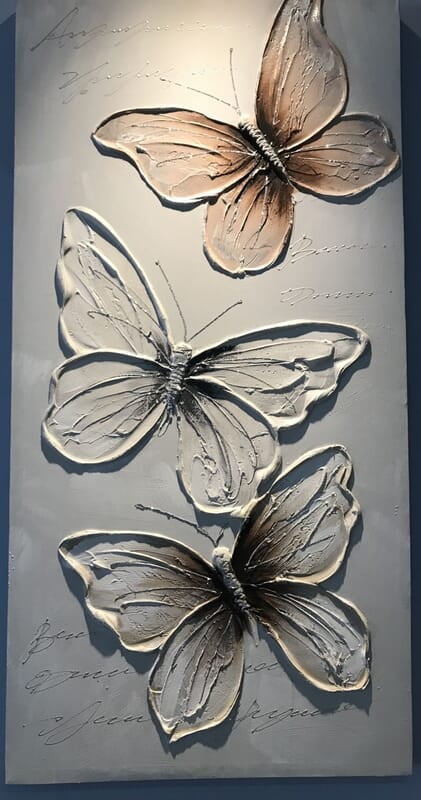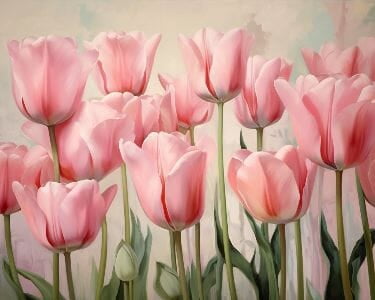
3D Butterfly Art
3D paintings, also known as three-dimensional paintings, are artworks that create an illusion of depth and dimension on a flat surface. They use various techniques to achieve a sense of three-dimensionality and can range from realistic to abstract. Here’s a detailed look at 3D paintings
Customize
Product Details
Trompe-l'œil:
- Definition: A technique that uses realistic imagery to create the optical illusion of three dimensions.
- Characteristics: Highly detailed and realistic; often used to create the illusion of objects or scenes extending beyond the surface.
Anamorphic Art:
- Definition: A technique that involves distorted projection or perspective requiring the viewer to occupy a specific vantage point to see the intended image.
- Characteristics: Appears distorted from most angles but reveals a coherent image from a specific viewpoint.
Bas-Relief and High-Relief Painting:
- Bas-Relief: Slightly raised elements from the background, giving a subtle three-dimensional effect.
- High-Relief: More pronounced, with parts of the painting raised significantly to create a stronger 3D effect.
Perspective Drawing:
- Linear Perspective: Uses converging lines to create the illusion of depth and space. Commonly used in classical painting to depict scenes realistically.
- Atmospheric Perspective: Uses color and clarity to depict distance, with objects becoming lighter and less defined as they recede into the background.
Mixed Media:
- Combining traditional painting techniques with materials like sculptural elements, found objects, or textured surfaces to create a physical, three-dimensional effect.
Augmented Reality (AR):
- Modern technology that superimposes 3D digital elements onto the real world through devices like smartphones or AR glasses. This technique can bring static paintings to life with interactive 3D components.
Styles and Applications:
Realistic 3D Paintings:
- Focus on creating a lifelike illusion of depth and space. Often used in murals and large-scale installations.
Abstract 3D Paintings:
- Use form and color to create a sense of depth without representing real-world objects. Can be highly experimental and focused on visual impact.
Street Art and Murals:
- Artists use 3D techniques to create visually striking effects on building facades and public spaces. These works often play with architectural features and urban environments.
Interactive Art:
- Incorporates elements that change or move, engaging viewers and enhancing the three-dimensional experience. This can include sculptures or paintings that interact with light, shadow, or viewer movement.
Materials and Tools:
Paints and Mediums:
- Acrylics and oils are commonly used for creating detailed textures and layers that enhance the 3D effect.
- Texture mediums, like modeling paste or gesso, can be applied to create physical relief on the canvas.
Surface Preparations:
- Artists may prepare canvases or panels with gesso or other materials to build up textures and create a base for 3D effects.
Sculptural Elements:
- Incorporating physical materials such as wood, metal, or fabric to add tangible, three-dimensional components to the painting.
Characteristics:
Depth and Dimension:
- Achieved through careful manipulation of perspective, shading, and layering to create the illusion of three dimensions on a two-dimensional surface.
Visual Impact:
- 3D paintings often have a strong visual impact due to their ability to mimic or suggest physical space and objects.
Viewer Engagement:
- Can involve viewer participation or interaction, especially in the case of augmented reality or interactive art installations.

